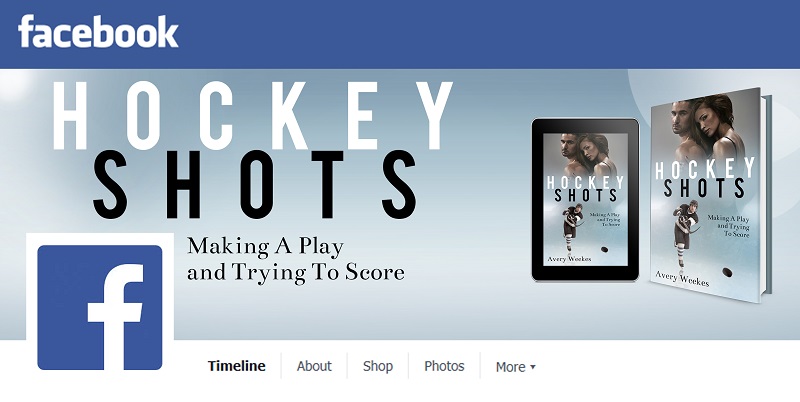|
So now that you have finally finished your manuscript what’s next? The likelihood is that you have trawled the internet looking for advice and possibly feel more confused now than you did beforehand, and with the masses of information available this is completely understandable too.
The information ranges from simply uploading it to your chosen publisher and waiting for the cash to come pouring into your bank account (information given by many ‘get rich quick’ sites and blogs), to paying vast sums of money to book advertising companies who guarantee (for a fee of course) that your book will sell X amount of copies. However, for most authors you will be working on a specific budget, now if you’ve planned this it should include (as a bare minimum) editing, formatting and cover design, I say as a bare minimum because these three elements of your book are the most important. A good editor will be able to advise as to where your book needs to go to become the masterpiece it was destined to be, your formatting will make it easier to read and your book cover design will make it stand out and look highly professional to your chosen audience.
0 Comments
The art of being creative (as many authors will tell you) is something which comes from deep within, however, like most art forms, your ability to create is a very personal one and something which I believe gets better the more time you spend and focus you place on doing it.
This casts a light upon the various classes that any writer or artist can take in order to grow themselves, I mention this because about fifteen years ago I was speaking to an author about the use of writing classes, he was of the mindset that ‘you either have it or you don’t, you can’t learn it from a class or a book’. Which to some degree is true, you can’t make the most intelligent person write a novel if their heart isn’t in it. A book cover design for any author is a combination of extensive research and creative flair from the designer, however it is the research into the design and its drafts which can get overlooked when someone decides to make their own. It’s easy these days to go to the many stock imagery websites and buy a photograph and simply add your title, subtitle and author name, however this still doesn’t mean you’ll necessarily have an effective design.
The stock imagery websites are great and will give any designer a wide choice of photography and vector images to choose from, but they are still aimed at a very wide buying audience of designers, advertisers, web designers and so many other creatives. This inevitably means that the images upon these sites need to appeal to a wider range of uses other than just book cover design. Any book cover design will have gone through many stages of focus and deliberation before reaching the book shelves and becoming the ‘face’ of its title, it is worth remembering that your cover is (as well as beautiful art) advertising and has the job of selling your book.
The reason that I point this out is because at times it can be forgotten, working with authors on hundreds of book covers has taught us that it can be easy to become acutely focused upon personal influences with regards to the book’s front page. Creating a draft for a book cover design takes many hours of design work, but what most authors won’t necessarily be aware of is the amount of research and development prior to even opening up Photoshop and beginning the cover.
When any new author comes to you with their book, they will have already formed ideas of what they would like to see upon the front page, this is perfectly normal as you can imagine, when you spend anything up to a year writing the manuscript you know the book better than anyone else. Publishing your own eBook has never been easier than it is today, with the use of Amazon’s KDP you can upload your manuscript and have it on sale within 24 to 48hrs, however, uploading your book is just the start of the process, marketing it is another ball game all together. But before we get too far, there are some basics that the serious author should consider even prior to the launch of their book, these set the ground work or foundations of your presence as an author and build expectation. By generating interest before the release of your book you gain future readers and (hopefully) reviews to go upon the pages of the online book stores. The first step in your marketing plan will be setting up and maintaining a social media footprint, the mainstream sites like Facebook, Twitter, Instagram, Pinterest and Google + are great places to start and are all free to join. But please make the distinction between your social media pages as an individual and that of an author, it is best to keep them separate, by doing so you can tailor your author’s pages to reflect your book, genre and professionalism as a writer. Ensure that your banners upon the top of each site (and your profile image) complement each other, a reader will expect to see consistency across them all. To a certain degree it pays to look upon your ‘branding’ here as though you are running a small business (after all, you want to make sales right?), by adopting a business-like approach you are able to step back and look at the bigger picture of selling your book within a highly crowded market place. Your social media pages will have the underlying goal of helping you to sell your book, but you do need to understand that you can’t post non-stop adverts either, people get quickly turned off by the hard sell and will stop following you very quickly if that’s all they see. The best media pages inform and enlighten (and if they make you smile at the same time then even better), they should have some detail about what’s happening with regards to your book but they should also be fun enough for the viewer to keep reading, just imagine you’re chatting to a friend (you wouldn’t overload them with sales would you?). From your social media you should start slowly informing your followers of the up and coming launch of your new book, you can even give away the first chapter to hook them (this has worked for so many authors), again, don’t go overboard with the adverts either. Along with your social media you should look at starting your own blog, this is a great way to generate interest in you as an author, it also gives you a chance to show off just how much you know about the genre and subject you’ve written in. Getting a blog up and running is easy and normally free, but you will need to keep on top of it, adding well written posts will keep your reader engaged and build trust in your ability to communicate (they’re more likely to buy your book when they see how engaging you are as a writer). Next is a website, these can be free from many of the online website building services, it is worth taking note that the free options usually have the name of the provider in your website name, you might want to use a paid service and then you’ll have the option of just having a web address without the weebly.com added to the end of it. Once you have a website up and running it is important that it reflects the style of your books, you should have a home page, about page, news, contact and blog too, these give you a great opportunity to promote and connect with your readers. Using an email building list is also a great way to help with future sales, however, you’ll need to offer something in order for a visitor to give you their email address, it could be for the first chapter of your book, once you then launch with your book you can email them to promote it and gain that sale. Now that you have a great online presence it’s time to launch your book and get some crucial reviews, they say that when you publish you should aim to get at least 20 reviews from the get go, this helps in the ranking of your book but not only that it helps your buyer to have confidence in choosing your book (over countless others). Getting reviews can seem a little difficult but it can be easier than you think, firstly you should draw upon your friends and family to submit reviews, if you promote your eBook for the first few days for free you can ensure that everyone you know gets a copy and in return leaves a glowing review for you. The free promotion for eBooks on Amazon can be a great way to get readers and reviews, use it wisely and you can elevate your book to another level altogether. Looking at other areas online to promote your eBook is very useful, there are a whole host of online sites which specialize in promoting free eBooks and chargeable ones too, these will normally promote your book for a day or so, but be aware, lots of others use these sites too, your moment in the spot light will be very short using these services. There are of course companies who offer book promotion and advertising services, they will actively promote your book to specific audiences in order to gain sales, these companies will charge a great deal for this service and so you must do your research before you chose to promote via these channels. They can work brilliantly but they can also be costly and without the impact you were hoping for, again, do your research before you part with any money. A launch party or going to book fairs may not seem like the obvious thing to do when promoting an eBook but it can be done, you will need flyers, postcards, business cards and a banner to give yourself ‘presence’ whilst standing in the hall, conference center or book store. In order to either give away or sell copies of your book you can download copies onto promotional thumb-drives, it’s even possible to get them printed with elements from your eBook’s cover too.
The use of online forums to help promote your book and website has long been an established route for many authors, there are hundreds of forums online and plenty of topics for you to contribute towards, this shouldn’t be looked upon as blatant advertising or spamming but a way to connect with readers, help answer their questions and as a result help promote your book (don’t get it the other way around). Promoting your eBook can be hard work and will require effort, but if you stick at it you will get results. |
JD&JCategories
All
Archives
March 2024
All information within this website (including its blog) is published in good faith and for general information purposes only. JD&J Design LLC does not make any warranties about the reliability and accuracy of this information. Any action you take upon the information in this website is strictly at your own risk. JD&J Design LLC is not liable for any losses and/or damages in connection with the use of this site and information.
|
Services |
Support |










